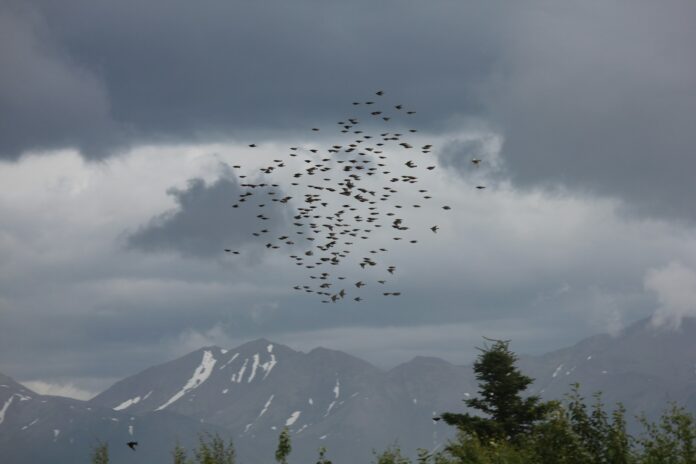Bird migration is one of nature’s most fascinating phenomena, with millions of birds traveling thousands of miles between breeding and wintering grounds each year. However, climate change is increasingly disrupting these intricate patterns, posing significant challenges for avian species worldwide.
The Science Behind Bird Migration Patterns
Bird migration is a complex and finely-tuned process driven by a combination of genetic, environmental, and physiological factors. Birds migrate primarily to exploit seasonal resources, such as food and breeding sites, which are not available year-round in their home regions. The timing and routes of migration are influenced by various cues, including changes in daylight, temperature, and food availability. These cues trigger hormonal changes that prepare birds for the arduous journey ahead.
Navigation during migration involves an impressive array of skills and senses. Birds use a combination of the Earth’s magnetic field, the position of the sun and stars, and visual landmarks to find their way. Some species even have an innate ability to detect polarized light patterns, which helps them navigate under cloudy conditions. This intricate system allows birds to travel vast distances with remarkable accuracy, often returning to the same breeding or wintering sites year after year.
However, the delicate balance of these migration patterns makes them highly susceptible to environmental changes. Any disruption in the cues that birds rely on can lead to mistimed migrations, missed breeding opportunities, and increased mortality. As climate change continues to alter global weather patterns and ecosystems, understanding its impact on bird migration becomes increasingly crucial for conservation efforts.
How Climate Change Alters Migration Routes
Climate change is reshaping the natural world in profound ways, and bird migration is no exception. One of the most significant impacts is the alteration of migration timing, known as phenological shifts. Warmer temperatures and changing precipitation patterns can cause birds to depart earlier or later than usual, leading to a mismatch between their arrival and the availability of critical resources like food and nesting sites. This mismatch can have cascading effects on bird populations, reducing their reproductive success and survival rates.
In addition to timing, climate change also affects the physical routes that birds take during migration. Shifts in climate zones can alter the distribution of habitats, forcing birds to find new stopover sites and wintering grounds. For example, rising temperatures in the Arctic are causing the tundra to shrink, pushing some species further north in search of suitable breeding areas. Similarly, changes in ocean currents and wind patterns can influence the migratory paths of seabirds, potentially exposing them to new threats such as increased predation or human-induced hazards.
Moreover, extreme weather events, which are becoming more frequent and severe due to climate change, pose significant risks to migrating birds. Hurricanes, storms, and heatwaves can cause direct mortality or force birds off course, leading to exhaustion and increased vulnerability to predators. These events can also destroy critical habitats, further exacerbating the challenges faced by migratory birds. As climate change continues to accelerate, the cumulative impact on bird migration routes and the species that depend on them is likely to intensify.
Case Studies: Bird Species Affected by Climate Change
Several bird species provide compelling examples of how climate change is impacting migration patterns. One such species is the Arctic Tern, known for its extraordinary long-distance migration from the Arctic to the Antarctic and back each year. As the Arctic warms, the Tern’s breeding grounds are shrinking, and the timing of ice melt is becoming increasingly unpredictable. These changes can lead to a mismatch between the Terns’ arrival and the peak availability of their prey, affecting their breeding success and overall population health.
Another species experiencing the effects of climate change is the Blackpoll Warbler, a small songbird that undertakes one of the longest overwater migrations of any songbird, flying from North America to South America. Changes in wind patterns and the frequency of storms in the Atlantic Ocean can significantly impact the Warbler’s migration. Adverse weather conditions can lead to higher mortality rates during their journey, reducing their numbers and potentially threatening the species’ long-term viability.
The European Pied Flycatcher offers yet another example. This species relies on the synchrony between its migration and the peak abundance of caterpillars, which are crucial for feeding its chicks. However, warmer springs in Europe are causing caterpillars to emerge earlier, leading to a mismatch between the Flycatcher’s arrival and the availability of food for its young. This phenological shift has resulted in decreased reproductive success and has raised concerns about the future of the species.
The impact of climate change on bird migration patterns is a multifaceted issue that poses significant challenges for avian species worldwide. Understanding the science behind migration, recognizing how climate change alters routes and timing, and studying affected species are essential steps in developing effective conservation strategies. As climate change continues to reshape our planet, proactive measures will be crucial to ensure the survival of migratory birds and the ecosystems they inhabit.
